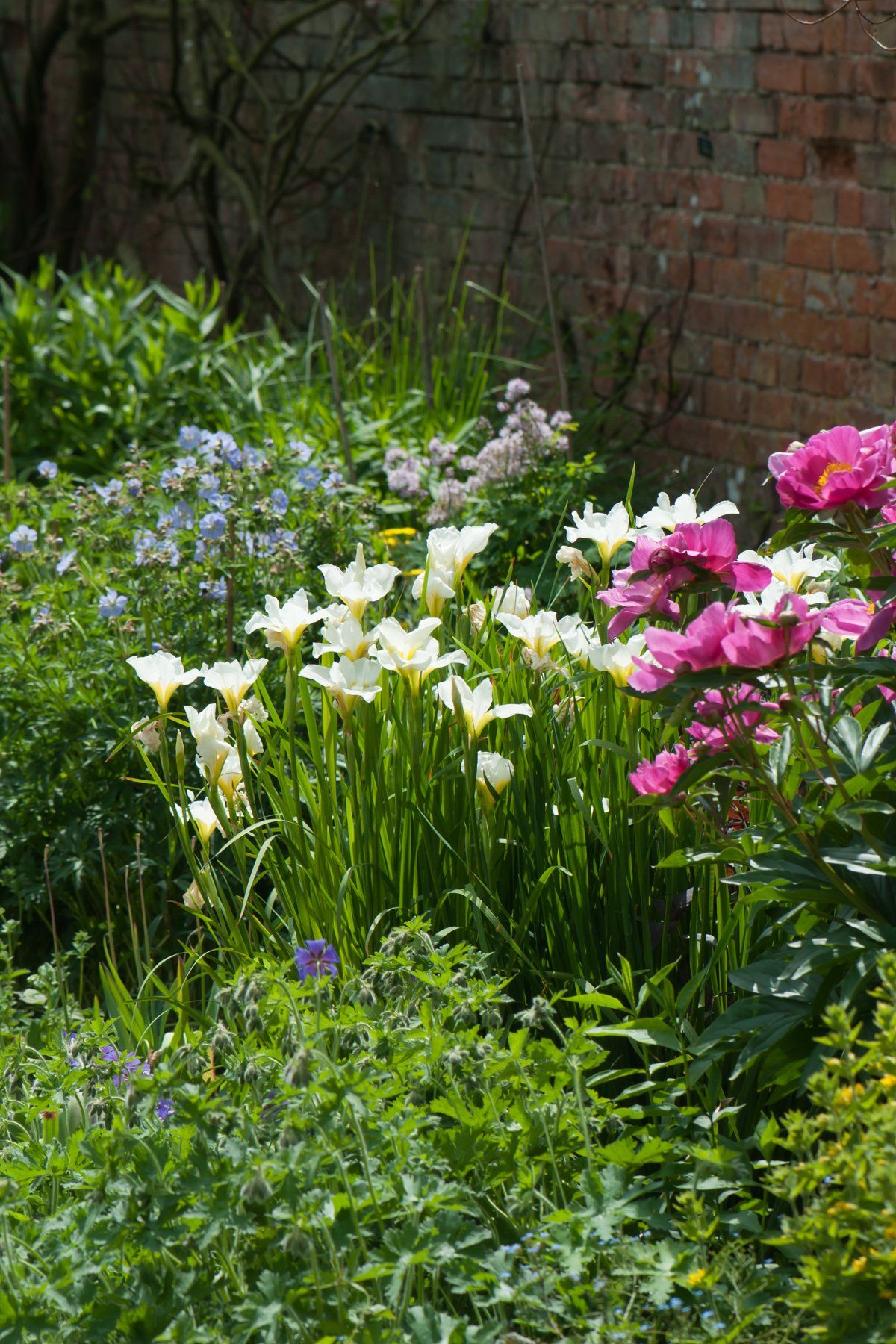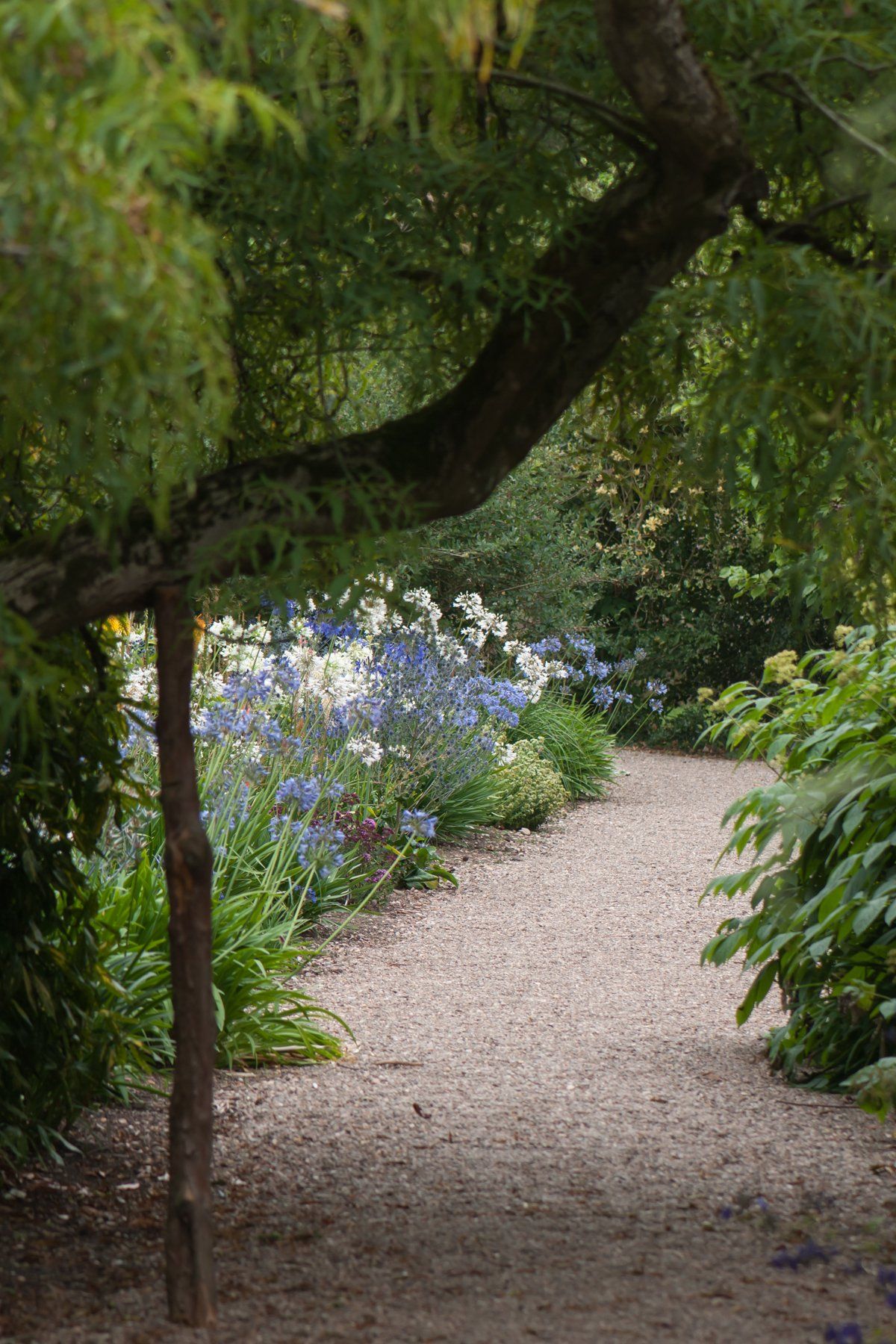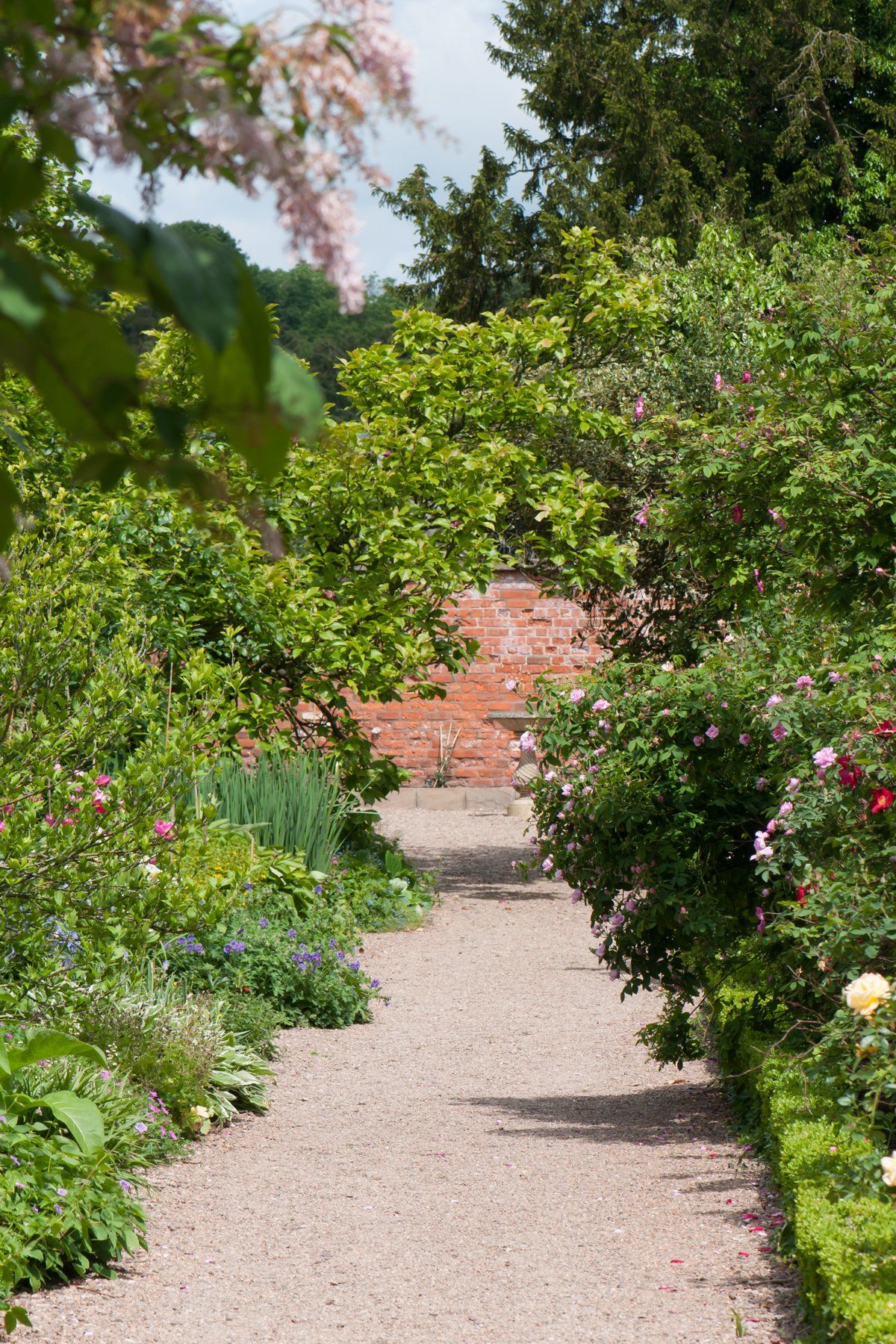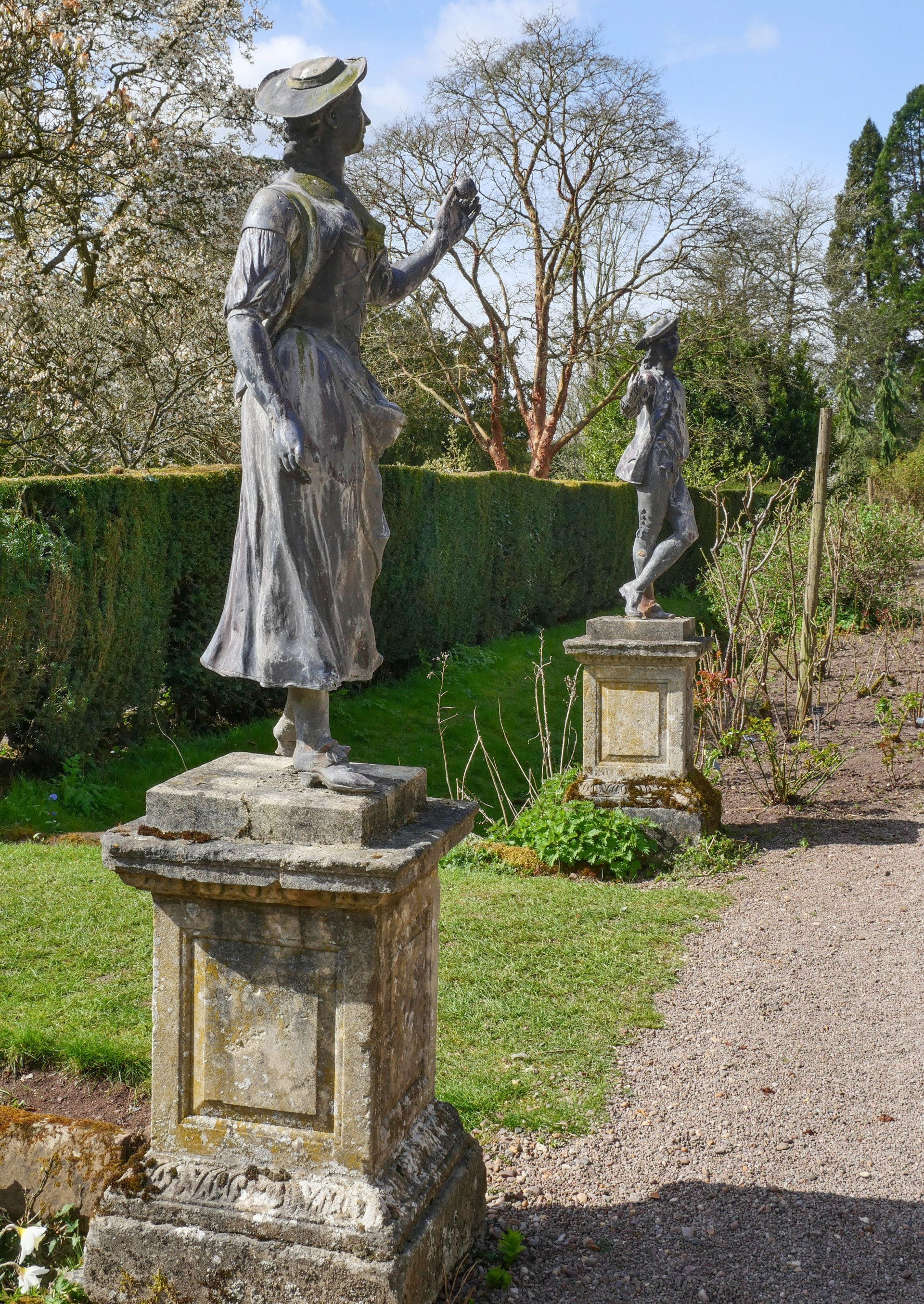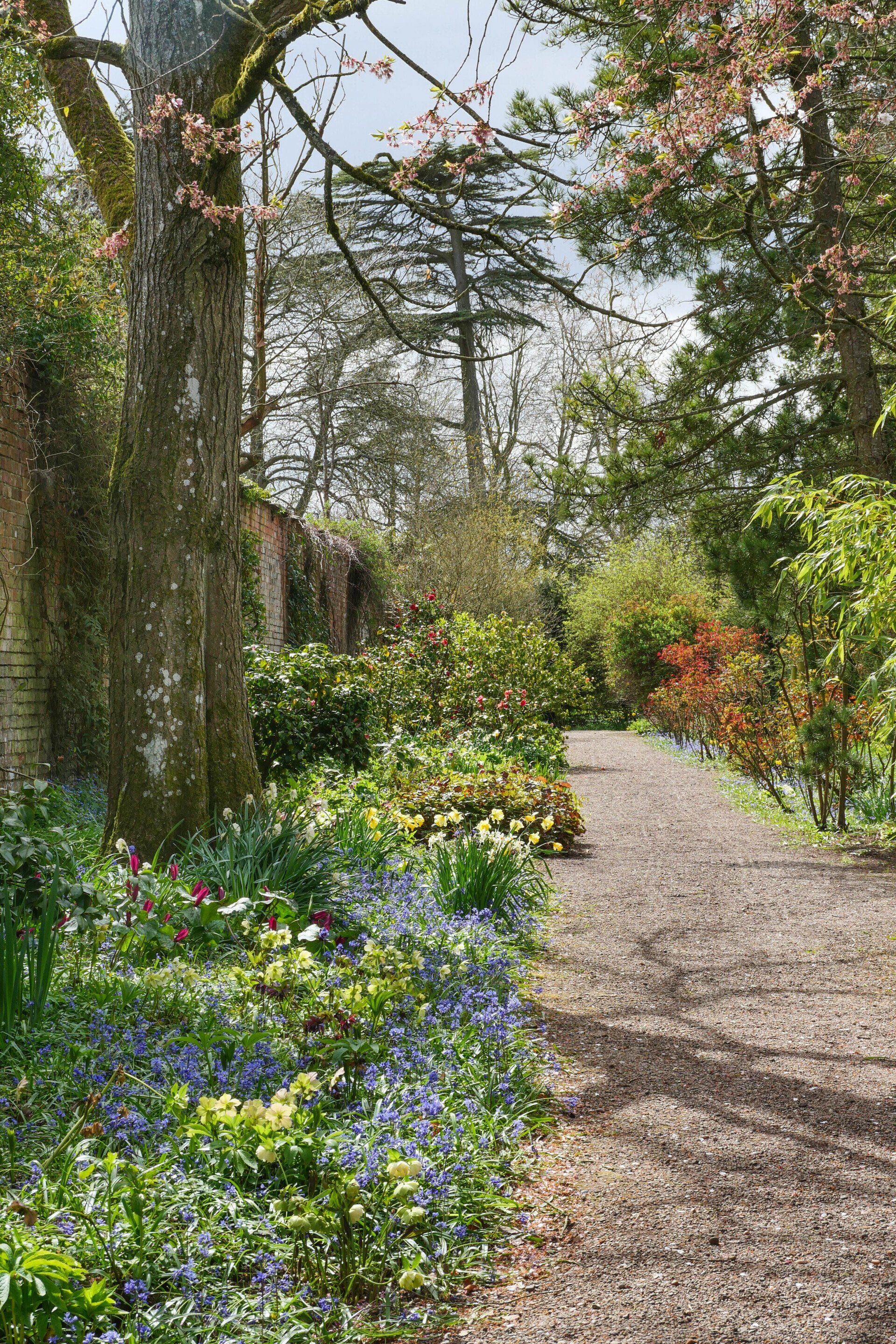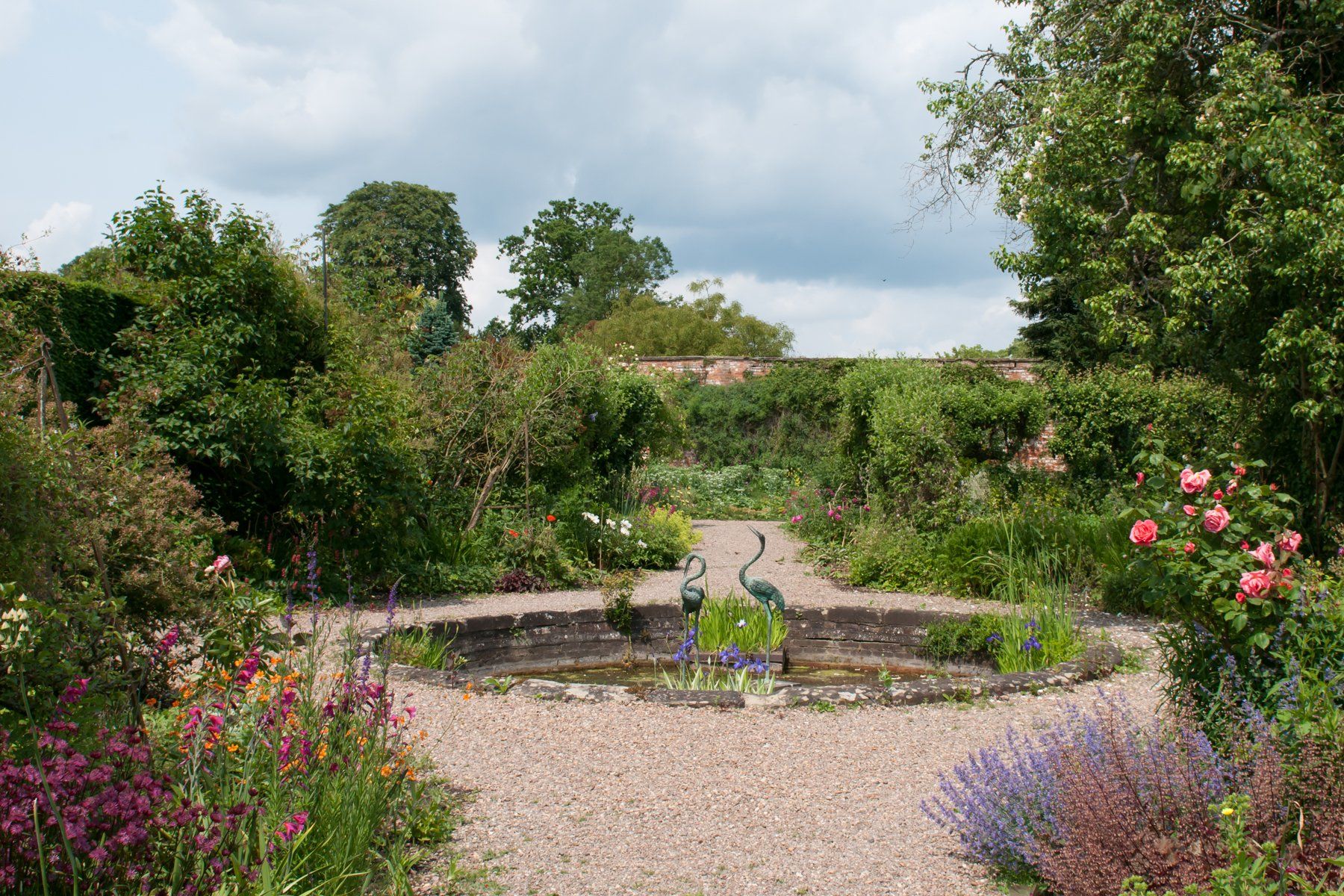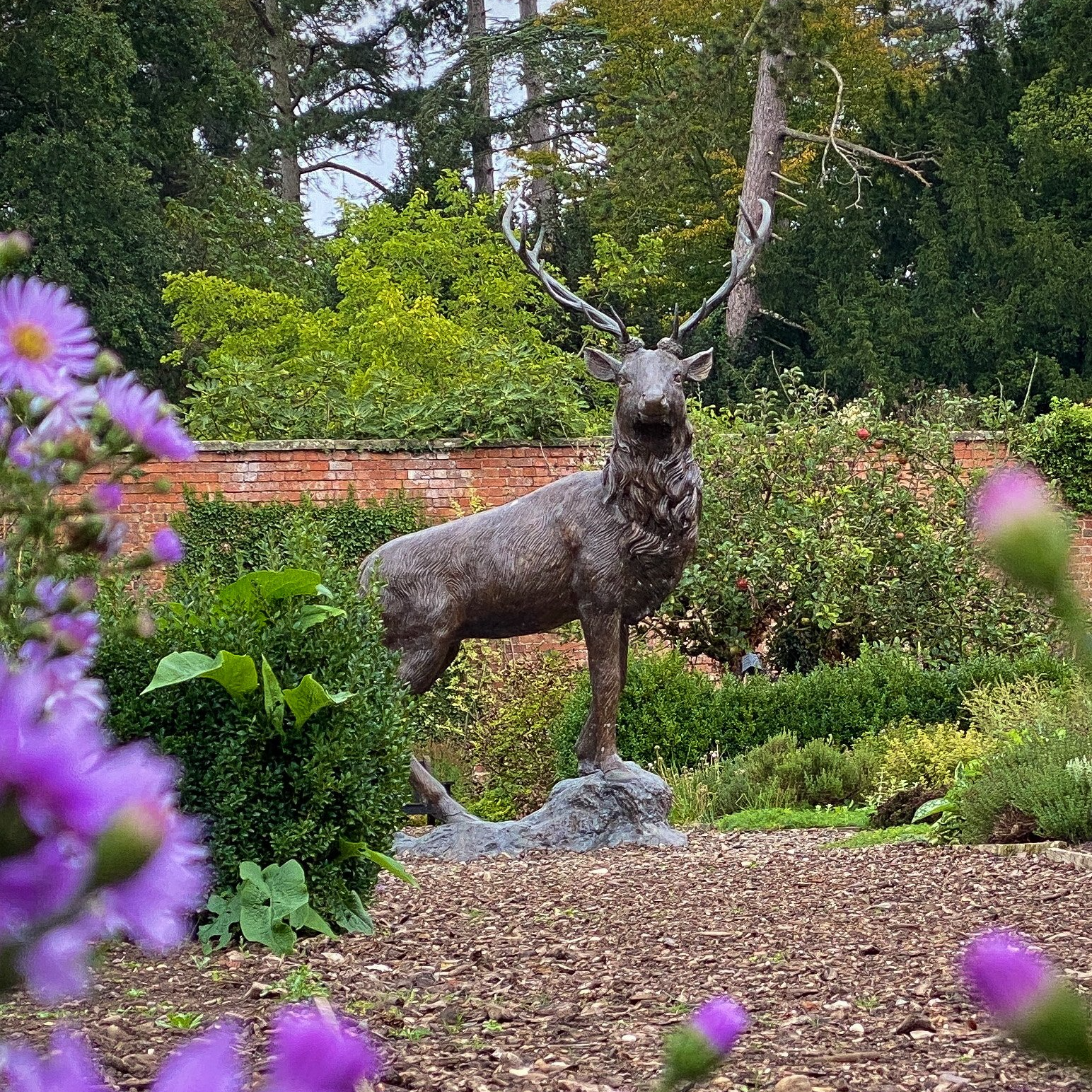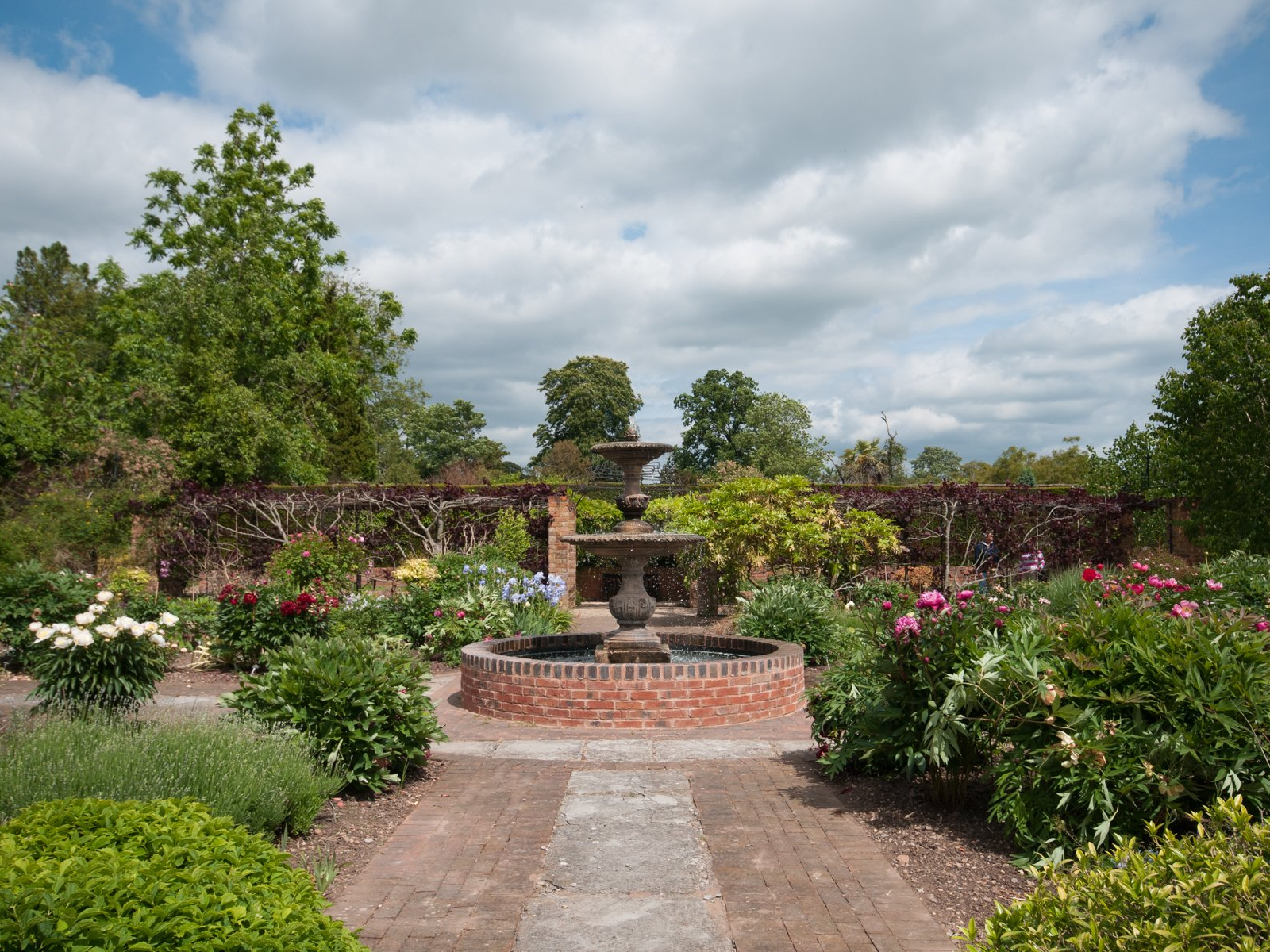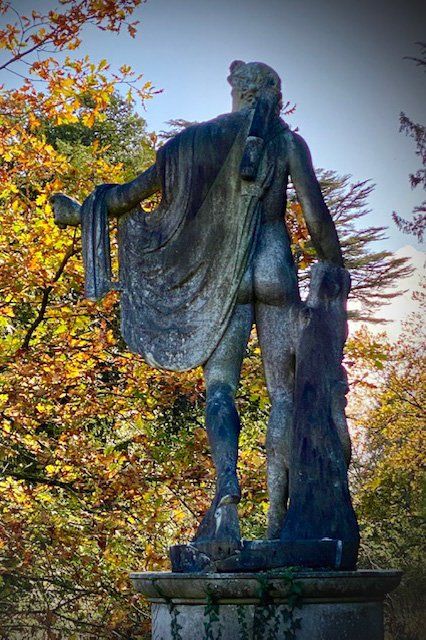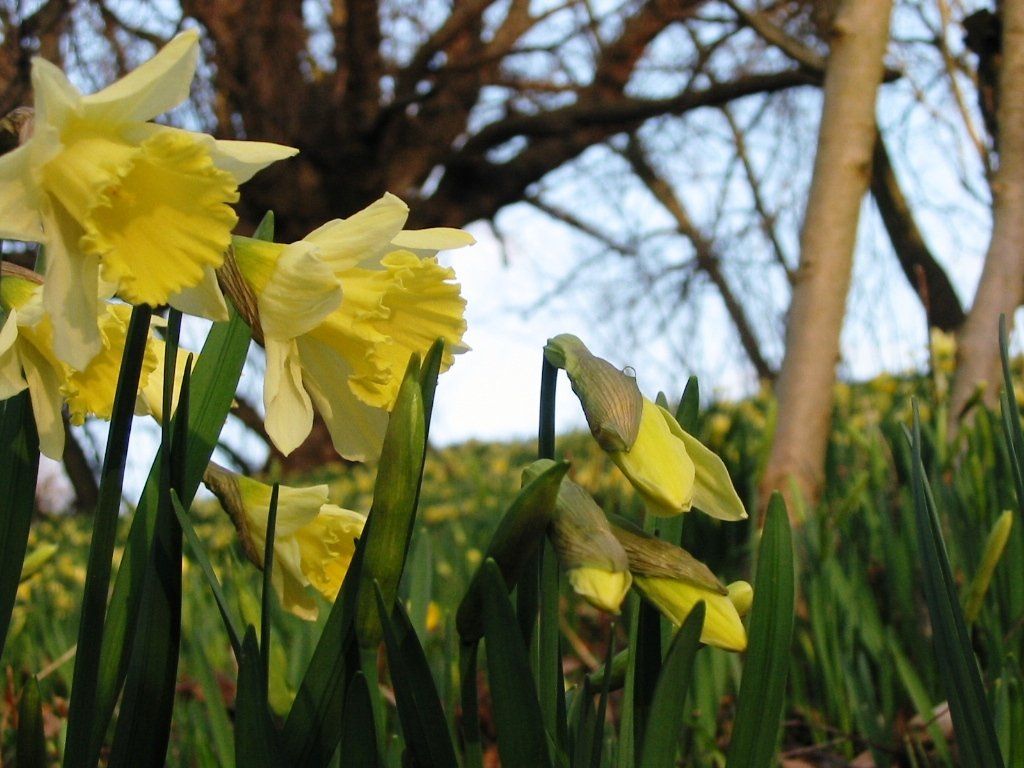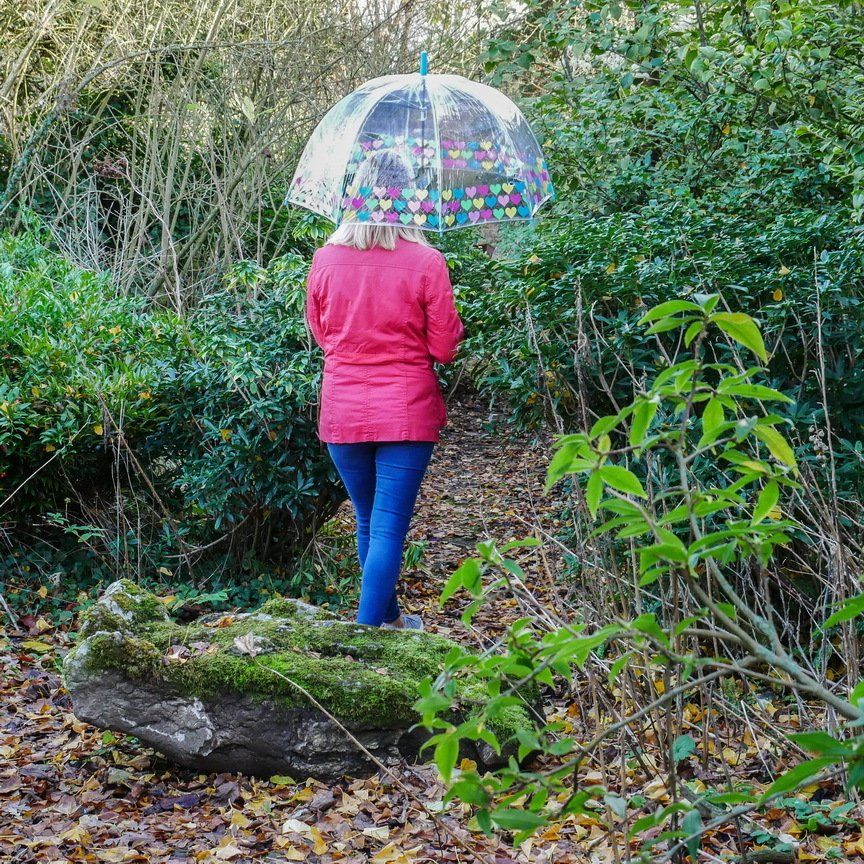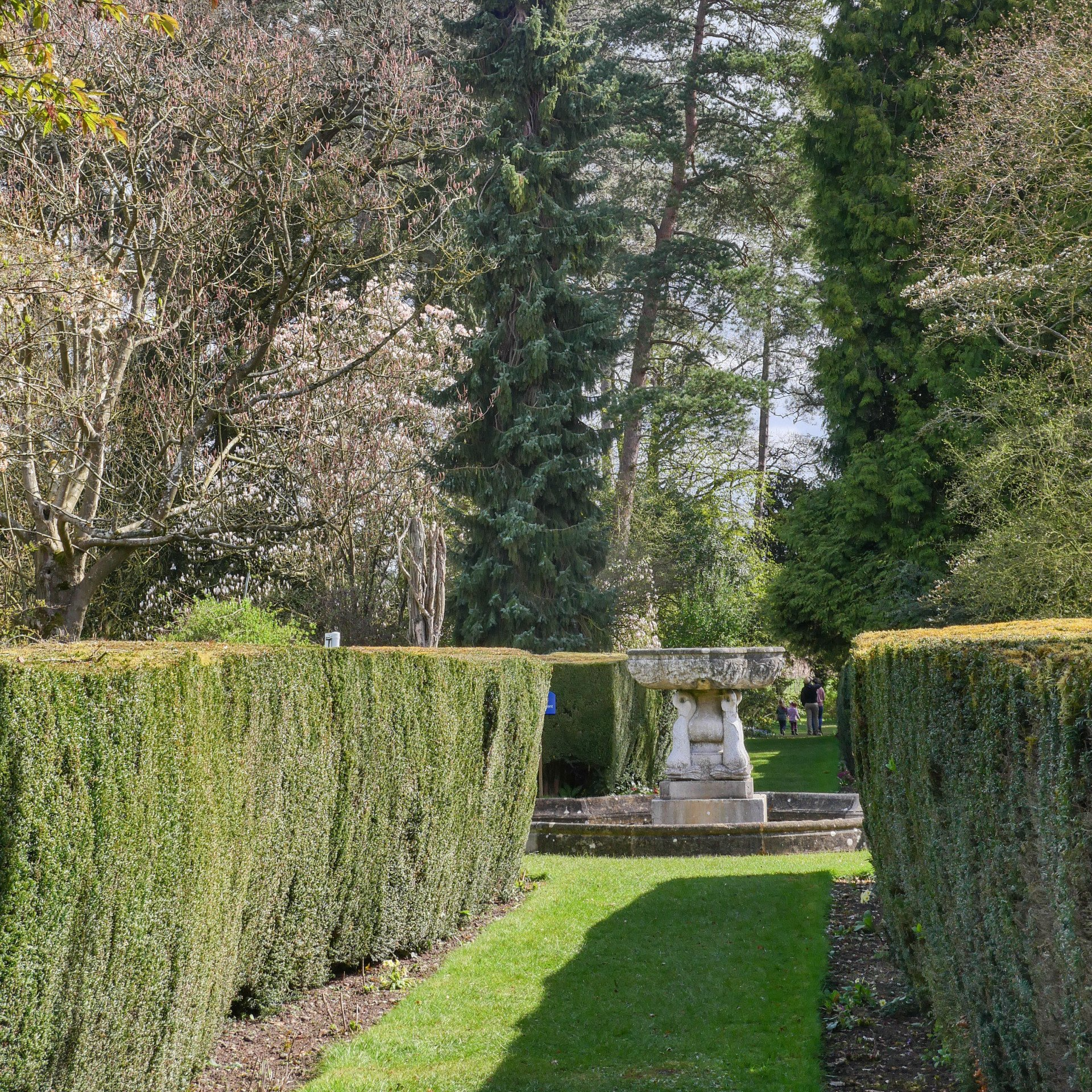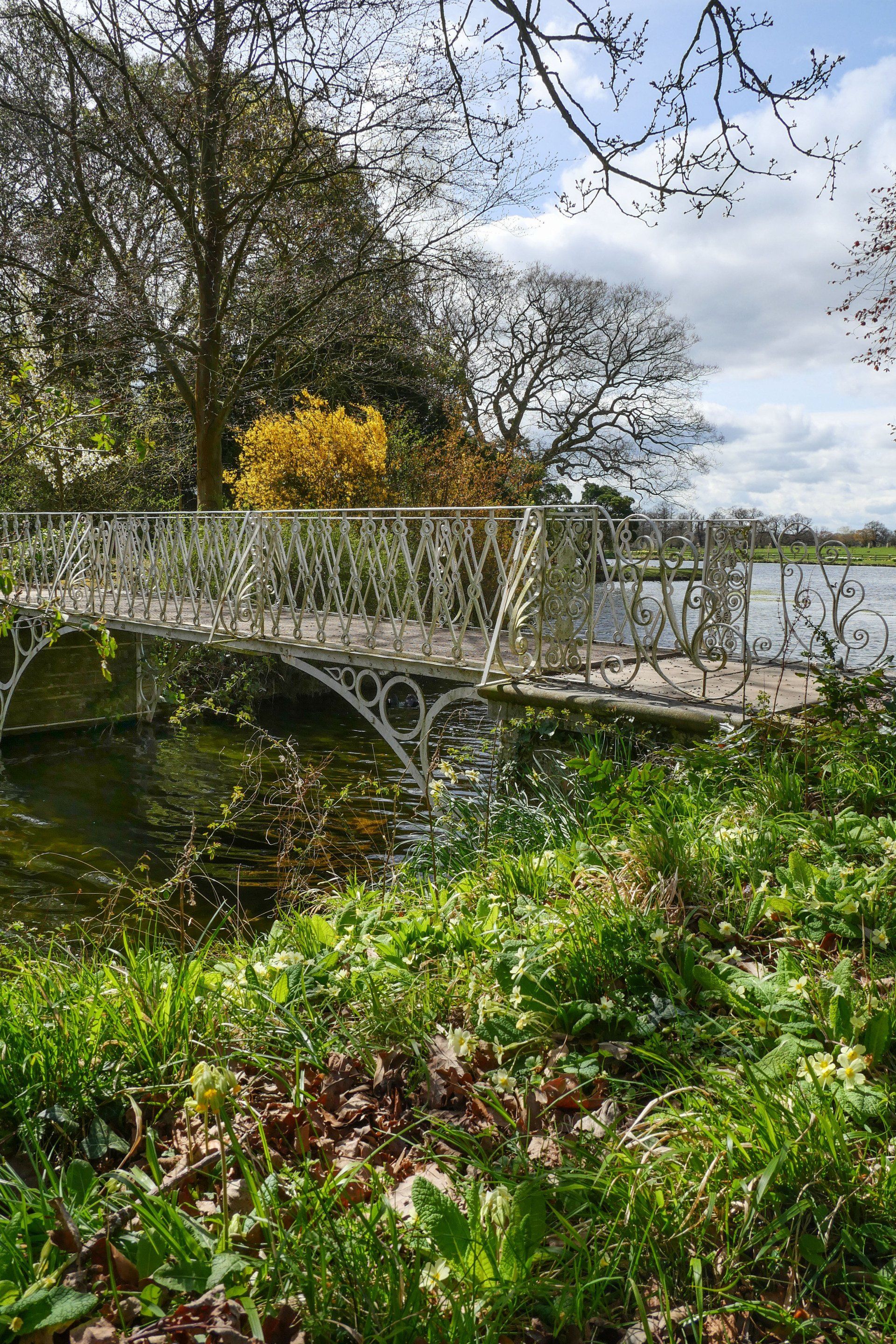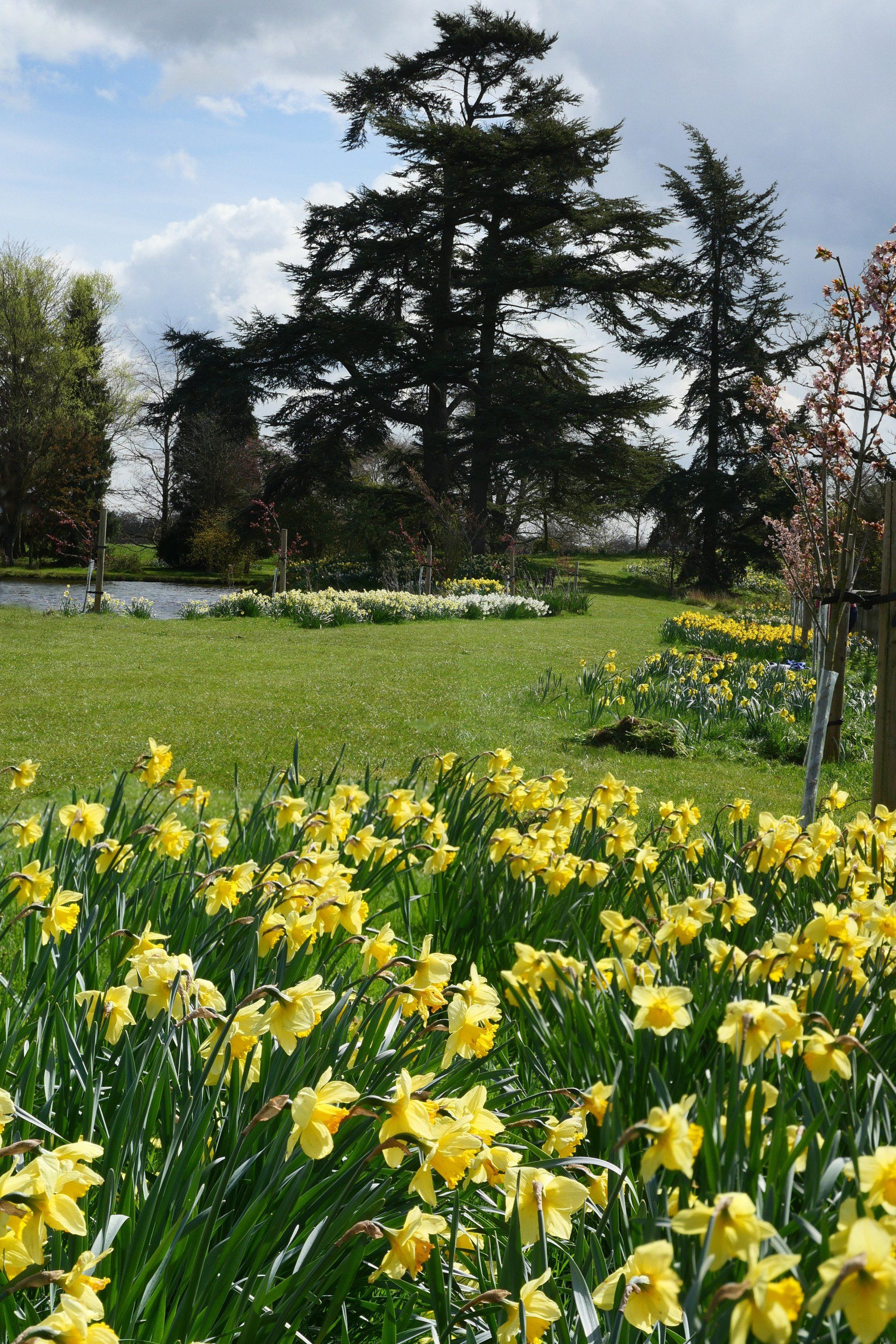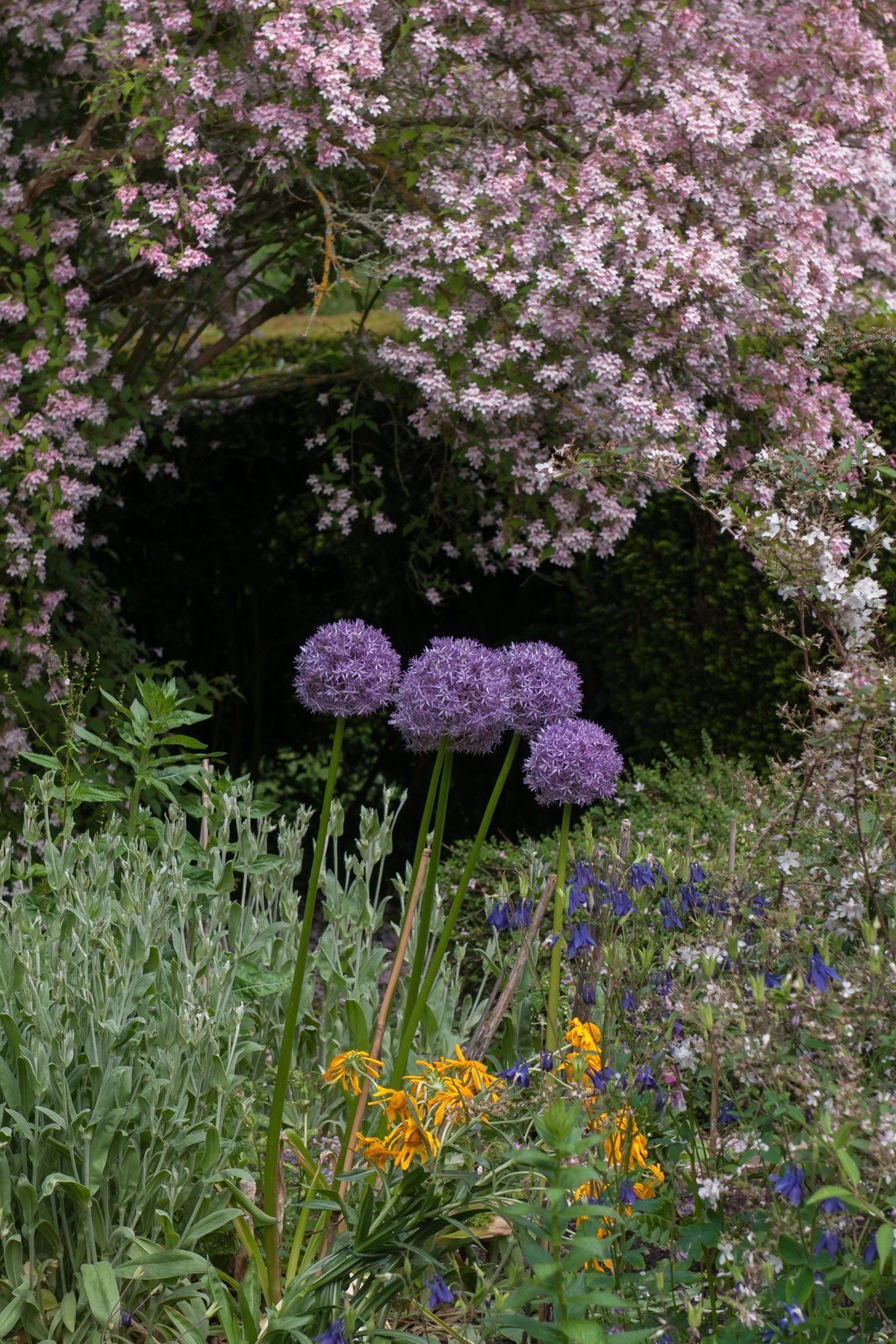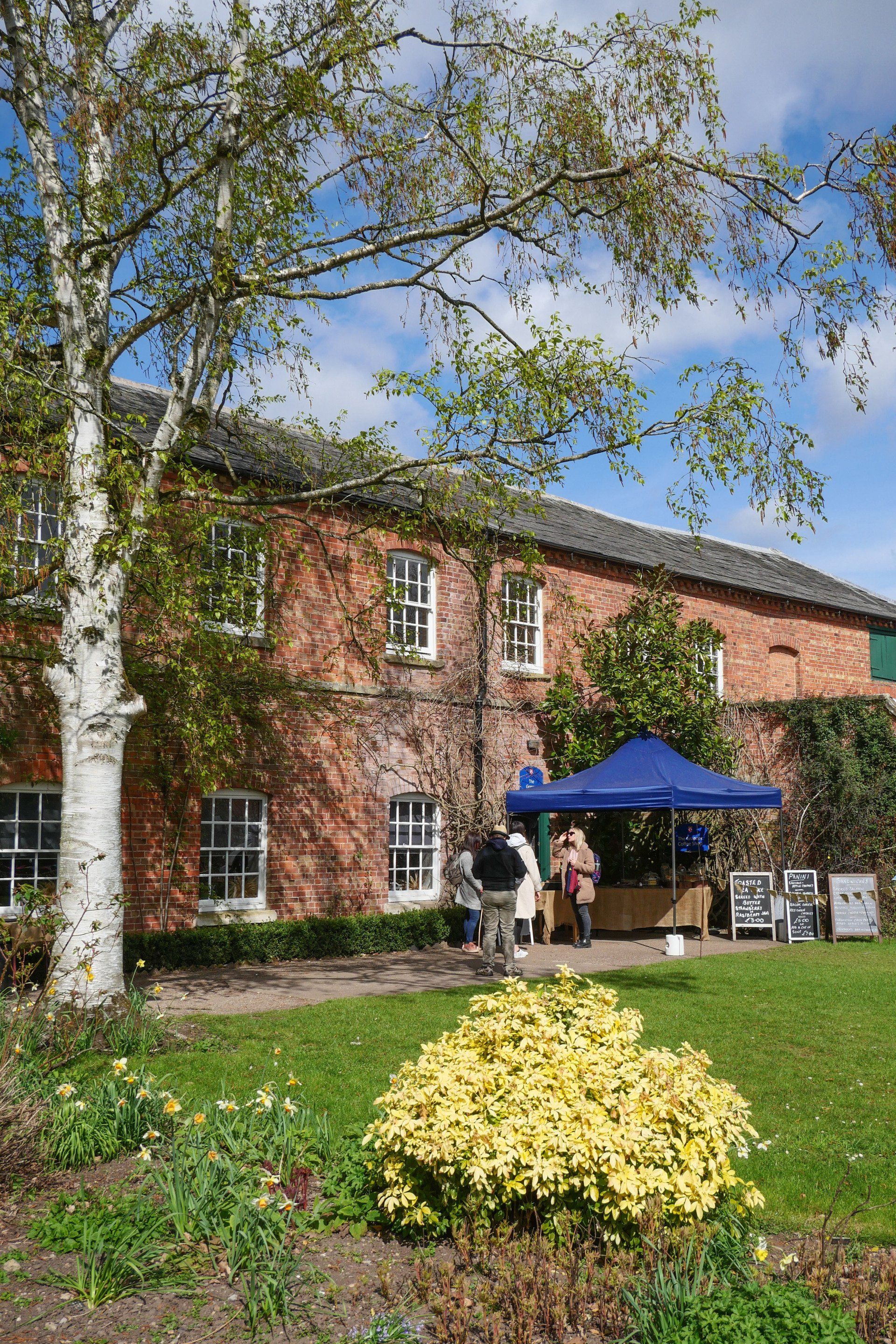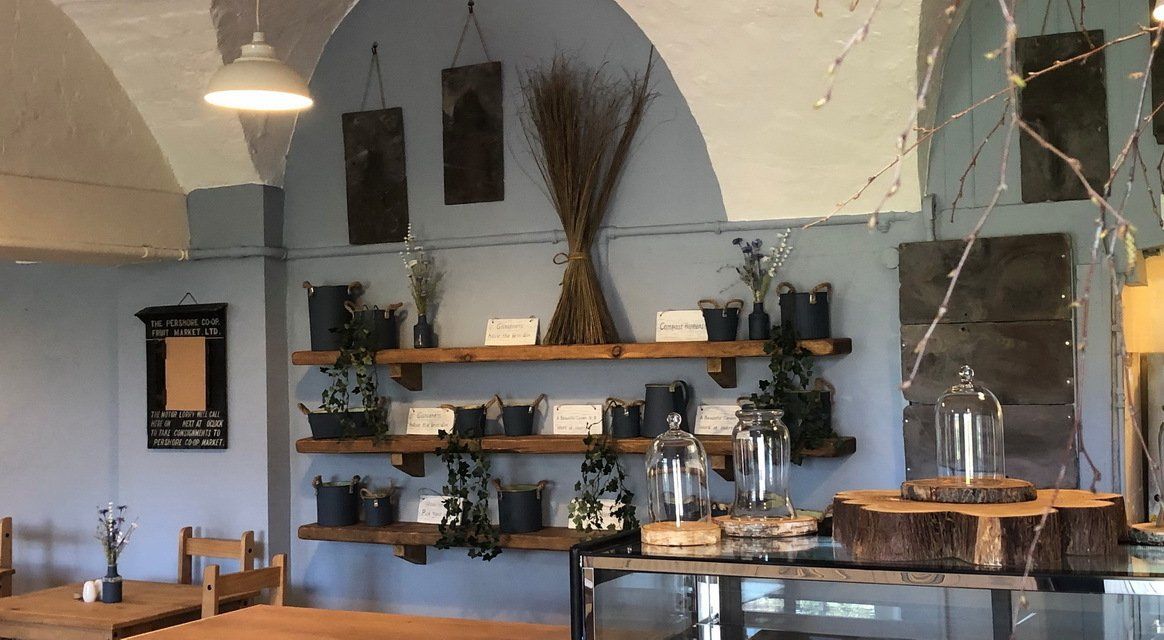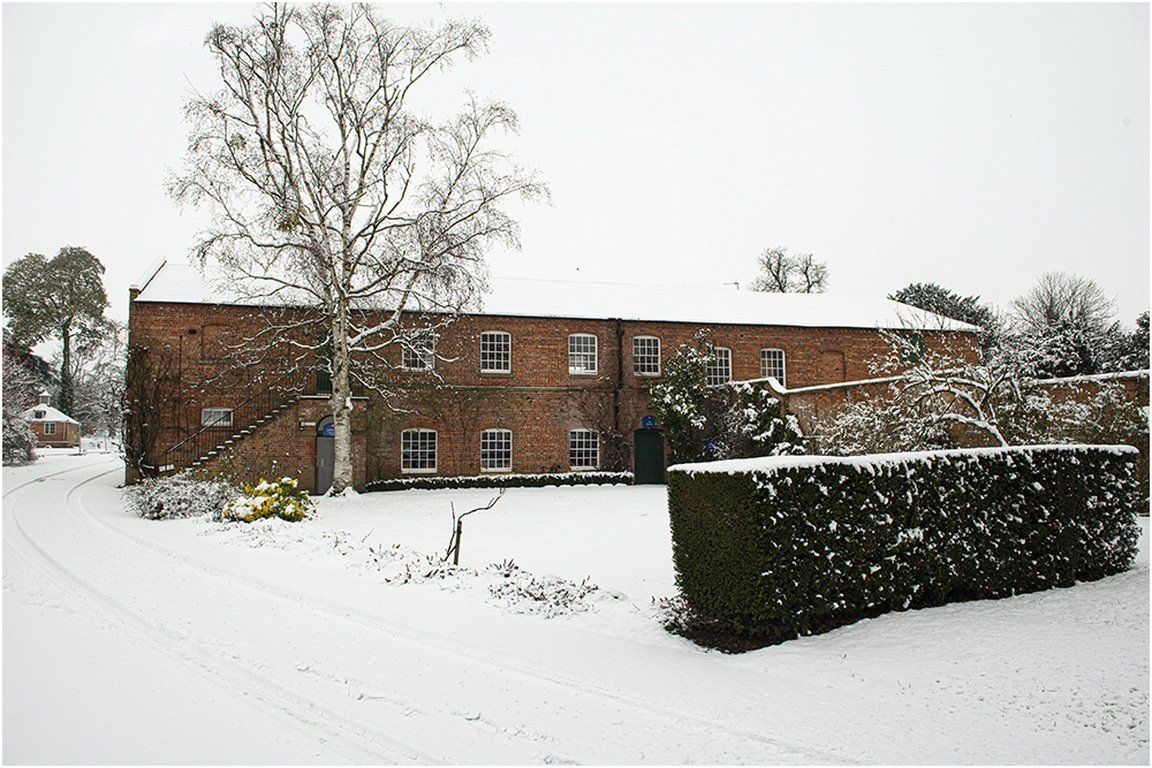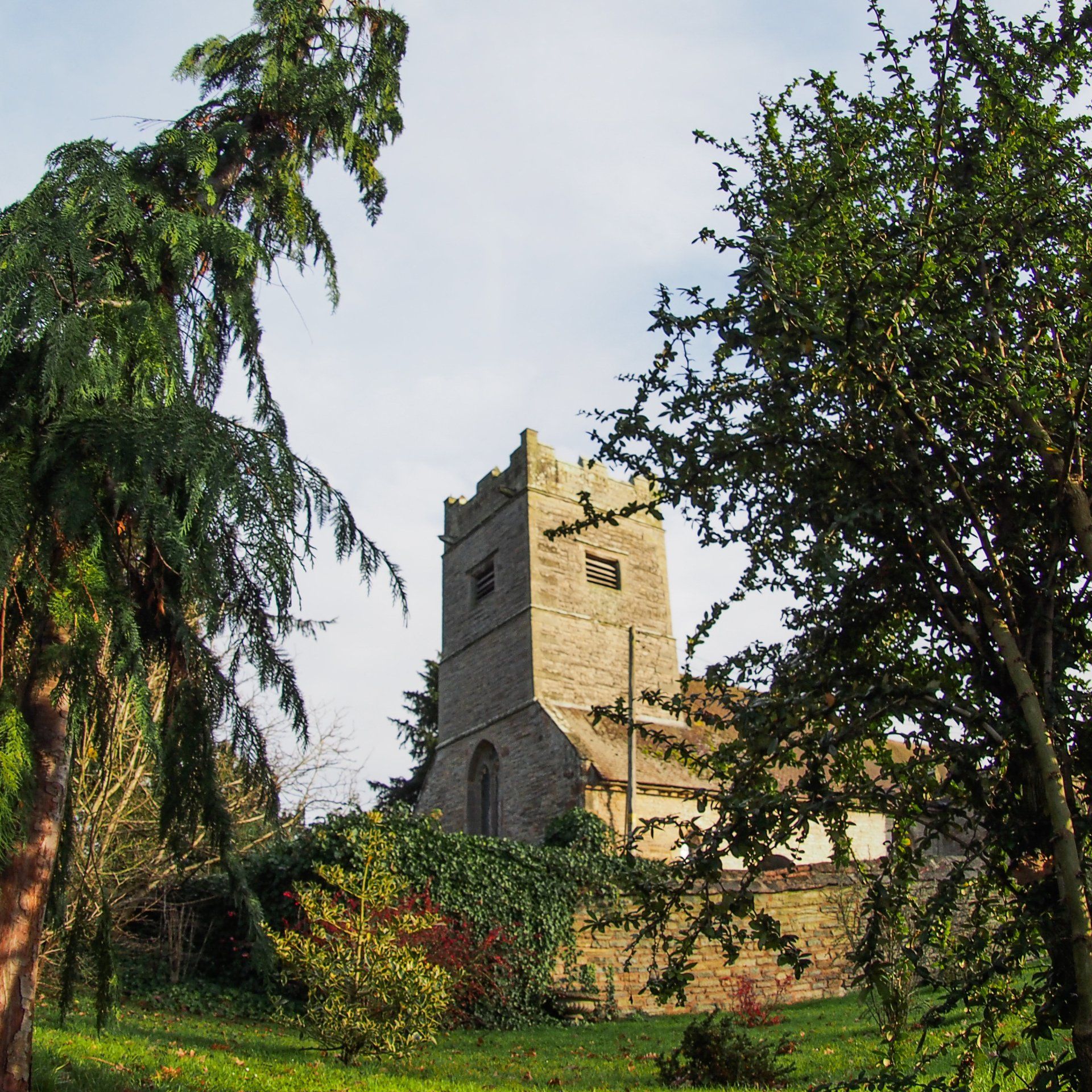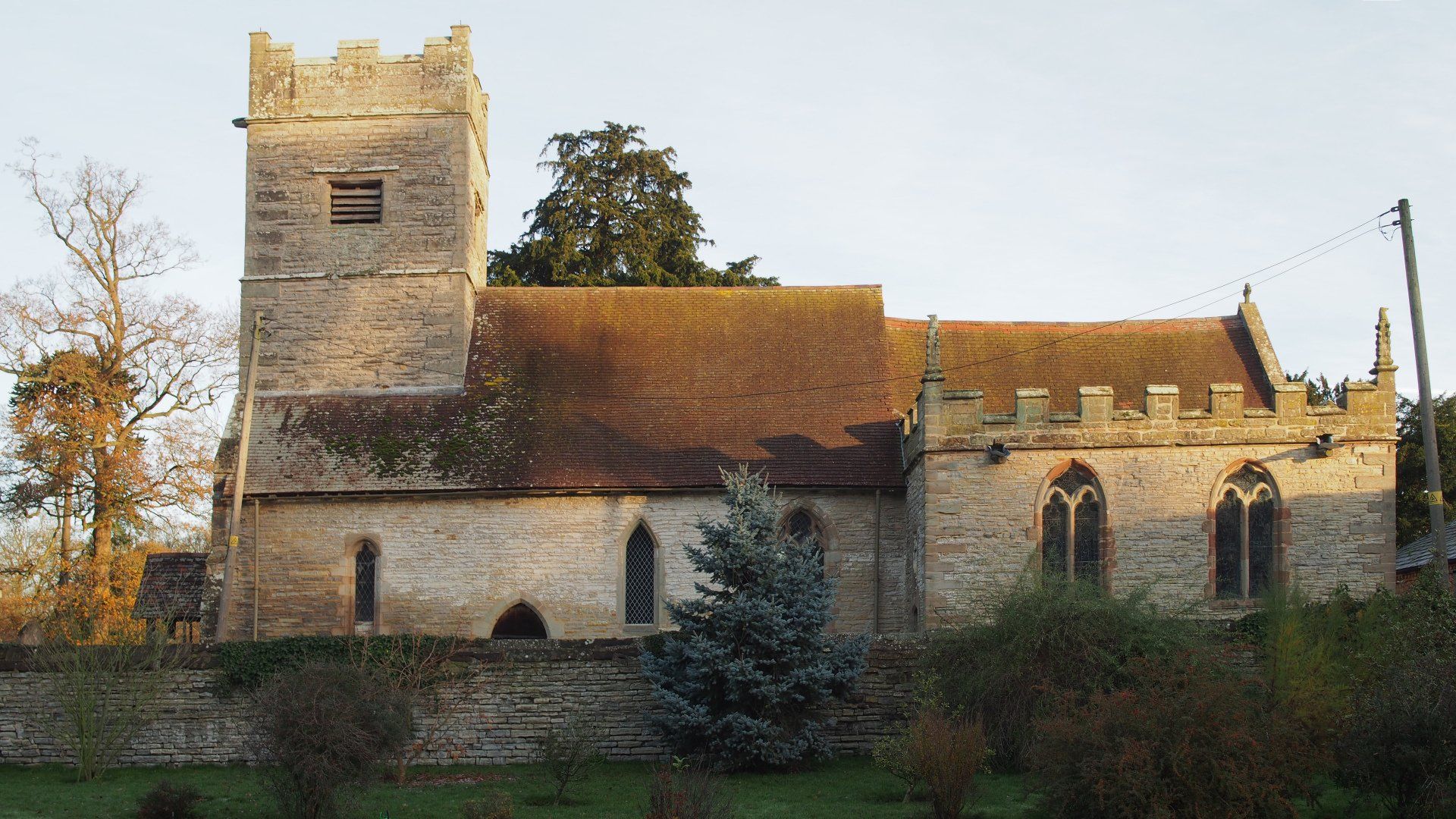The Garden
Cared for by generations of the Berkeley family, Spetchley Gardens holds something for everyone from families enjoying the open spaces around the lake, garden enthusiasts taking in the many different themed 'rooms' to plant enthusiasts discovering an unusual species them may not have come across before.
Gardeners Cottage
On leaving the main entrance, along the hydrangea and peony lined path, visitors will come across a pretty 19th century cottage, now home to our head gardener, which was once used by Edward Elgar for short breaks when he came to visit the Berkeley family.
The Borders
From the cottage visitors can stroll around the outside of the red brick walled garden taking in all of the four borders. Each borders has its own individual style with a treat in store for every type of plant enthusiast.
North Border
This border has over 30 varieties of the elegantly long stemmed Agapanthus ranging from deep blue to shimmering white which burst into flower from July and on into autumn. Blousy, beautiful blooms of the paeony and magnolias are just a few of the other flowers putting on a show in this border between May and August.
East Border
A scent-sational border from May until high summer with fragrance permeating this, one of the most sheltered areas, of the garden. Quintessentially English, rambling, climbing and shrub roses line these borders with their intoxicating scent accompanied by fragrant lilacs and magnolias.
South Border
Splashes of colour can be enjoyed along this, the longest border which is 370 feet (115 metres) long, from May until autumn. Peonies, poppies and delphiniums provide pops of colour accompanied by ceanothus, clematis and wisteria and later joined by asters and chrysanthemums. An 18th century Doric temple is the perfect spot to retreat from the mid-day sun and gaze out along the yew lined hedges past the statues of Adam and Eve towards the Fountain Gardens.
West Border
Cheery daffodils bring welcome colour and scent to this border in spring making way for the heady scent of old fashioned roses and camellia blooms later in the season. At the far end of this border is Horse Pool, once used to cool and wash off carriage horses, with an array of plants that fringe the water lily-covered pool - the perfect spot to watch dragonflies darting to and fro between the lily pads.
Melon Yard
Four original ‘sunken greenhouses’, south facing to make the most of the sunlight, are situated within the sheltered walls of the Kitchen Garden. Sinking the frames into the ground avoided fluctuation in temperature and minimised heat loss. Once heated for the cultivation of tropical fruits such as melons and pineapples, these are now used for propagating plants for the garden to ensure a fabulous show throughout the year.
Enclosed on all four sides, the Melon Yard provides a sheltered microclimate for many tender sub-tropical plants such as Primrose Jasmine Jasminum mesnyi; Pineapple Broom Cytisus battandierie; double-flowering pomegranate Punica granatum; Chusan palm Trachycarpus fortunei all treating visitors to splashes of fiery orange, red and yellow.
Kitchen Garden
A bronze Ramsey stag stands proudly at the centre of the Kitchen Garden surrounded by old fashioned fruit trees and vegetable beds which supply the house with seasonal produce. Many of the borders change through the season from delicate winter snowdrops; cheery spring daffodils in spring to fluffy fragrant peonies in the summer. Keep your eyes peeled for Mr Potts too!
Leaving the Kitchen Garden visitors pass the delightful Heron Pool which takes you through to the Millennium Garden.
Millennium Garden
Designed by the late John Berkeley and garden designer Veronica Adams in 1999 to mark the new millennium, this part sub-tropical, part Italianate style garden provides colour through to late summer.
Visitors can pass through the pergolas entwined with Clematis ‘Madame Grange’ and C. alpina ‘Helsingborg’ , American Rose Acacia Robinia hispida ‘Macrophylla’, Cercis canadensis ‘Forest Pansy’.
The Rill Garden, with its contemporary water pools, is the perfect spot to relax and reflect under a wisteria clad arbour. Looking across visitors can see a traditional fountain with its gently burbling water, encircled by plants such as Hemerocallis and Cannas, Cordyline, Curcraea, Fatsia and Melianthus major.
Lovers’ Walk & the Apollo Statue
Lover’s Walk, lined by daffodils in spring, is overlooked by the statue of Apollo, the God of music, poetry, plague, oracles, sun, medicine, light and knowledge.
Fountain Gardens
Designed by Rose Berkeley and her sister Ellen Willmott the garden consist of four outdoor ‘rooms’ enclosed by yew hedges which in turn surround a central fountain. Originally, each bed was to represent a different botanical family but more freedom has now been given to the current planting including paeonias, daphnes, alliums, viburnums, magnolias in addition to two splendid Paper-bark maples. Considering the garden was the inspiration of Ellen Willmott, it is only right that it contains at least one plant named in her honour - Corylopsis willmottiae ‘Spring Purple’ which can still be seen today.
Rose Lawn & Conservatory
Laid out in the 19th century the Rose Lawn comprises of beds with a wide selection of roses. The lawn is overlooked by towering trees - some over 300 years old including a majestic cedar whose lop sided appearance is due to an encounter with a low flying American fighter plane.
Peeking inside the imposing Victorian conservatory, still complete with its original 19th century coke-fired boiler, visitors can see plants such as Plumbago, Acacia, Hibbertia, and Bougainvillea. We hope to open this building in the future once essential conservation work has been carried out.
Cork Lawn & Root House
From the cottage visitors can stroll around the outside of the red brick walled garden taking in all of the four borders. Each borders has its own individual style with a treat in store for every type of plant enthusiast.
This area of the garden takes its name from a Mediterranean cork oak tree Quercus suber, which stands on the eastern edge of the lawn.
In Spain and Portugal cork oaks are widely cultivated for their bark, which is used to make corks for wine bottles. Spetchley’s specimen is one of the finest in Britain and clearly displays its thick cork bark.
Close by is the Root House. This delightful thatched summerhouse, constructed in the 1840’s from the roots, burrs and barks of several trees, is a rare example of rustic English garden architecture seldom seen in gardens today. It was designed as a place for relaxation and quiet contemplation and today still fulfils these objectives admirably.
From here the path meanders towards the banks of the Garden Pool, passing a beautiful Brewer’s weeping spruce Picea breweriana along the way. Originating from the high slopes of the Siskiyou Mountains of Western North America, it has graceful drooping foliage which helps the tree shed snow - the weight of which might otherwise cause the branches to break.
To the left of the path, just before it reaches the lakeside, there is an opportunity to see an American swamp cypress Taxodium distichum displaying its intriguing airborne roots along the water’s edge. In the Florida Everglades these knobbly ‘knee-like growths’ rise above the water and provide much-needed oxygen to trees which have their normal roots submerged in water for several months of each year.
As the path curves back away from the Garden Pool it passes beneath the outstretched branches of a magnificent Lucombe Oak Quercus x hispanica ‘Lucombeana’ and leads to a small raised bed of acid soil containing ericaceous plants such as rhododendrons, heathers and gorse. From this point a narrow grass walk can be glimpsed leading towards a marble statue of Apollo in the distance.
The attractive wrought-iron footbridge to your left leads towards the Long Walk.
New Lawn & Lake Walk
This area of the gardens was once mainly laid to lawn with the occasional mature tree. However the current owners grandfather decided to ‘bring it into the garden’ by planting trees and shrubs to provide all year round colour and interest.
One of the most architecturally pleasing trees is a splendid specimen of Young’s Weeping Birch Betula pendula ‘Youngii’ with its silver-white bark and graceful fine branches.
In spring swathes of daffodils, many Spetchley’s very own Narcissus ‘Spetchley’, greet visitors and a collection of rowans
Sorbus app. and crab apples
Malus spp. burst into blossom later bearing brightly coloured fruits into late summer and autumn. In autumn the lake becomes a palette of rich reds, golds and yellows with
Cercidiphyllum japonicum,
Liquidamar styraciflua
and
Nysa sinensis putting on a show.
Long Walk & Garden Pool
Crossing the pretty wrought-iron footbridge, all that remains of a moat which surrounded the original Tudor House, visitors head towards the current home of the Berkeley family. On the left of the path is a young North African Cedar Cedrus atlantica ‘Glauca’, planted by the late John Berkeley in 2006 to commemorate the 400th anniversary of the Berkeley’s ownership of the park.
In spring a carpet of lilac-coloured Crocus tomasinianus blooms with yellow-flowering primroses and narcissi later to be replaced by rose-purple Martagon lilies Lilium martagon.
On warm sunny days the banks of the Garden Pool, where Sir Edward Elgar would often enjoy days fishing, are the perfect spot to sit at one of the many benches scattered at it’s edges and take in the far reaching views of the Malvern Hills and beyond.
Copse
From shrubs and small trees to towering pines, this area has a different feel to the rest of gardens where visitors can soak up the rustling of the trees and birdsong echoing through the canopy above them.
Rhododendrons and azaleas create a spring pallet of pinks and purples whilst cyclamen, scilla, primula and meconopsis emerge at their feet.
In early summer dogwoods Cornus spp take centre stage with their pure white to rose pink flowers only to be replaced by the pale porcelain blue flowers of the beautiful Asian Hydrangea aspera.
Watching over visitors are the magnificent Austrian pines Pinus nigra some which stand over 100 feet (30 metres) tall.
Originally planted as shelter for the garden beyond, it is said that Sir Edward Elgar was first inspired to begin work on his choral masterpiece ‘The Dream of Gerontius’ here.
In autumn a mosaic of coppers, reds and yellows are created by several cultivators of Japanese maple including Acer palmatum ‘Senkaki’, ‘Osakazuki’, ‘Dissectum’, ‘Aureum’ and Acer japonicum ‘Aconitifolium’ and ‘Vitifolium’.
Garden Café
The Café is located in what was once the estates old laundry. Built in 1851, it was in regular use until well after the Second World War but now has a new lease of life and providing a unique location for visitors to refuel and relax. Outside in the tea garden there are a number of interesting plants including Magnolia grandiflora with it’s lily-like pale creamy-white flowers. On the warm south-facing wall several roses and clematis jostle for position.
Church
This simple 14th century building is filled with a series of monuments to several generations of the Berkeley family including Rolland Berkeley (died 1611). The church is maintained by the Churches Conservation Trust and is open to visitors. Within it’s grounds is a yew tree thought to be over 200 years old.
Sign up for our monthly Newsletter
Every month we send a round-up of the latest stories, event news and offers from across the Spetchley Park Estate. Plus, if we spot anything extra we think you'll love, we'll let you know about that too.
Simply sign up today and don't worry – you can unsubscribe from these emails at any time.
Contact Us
Thanks for signing up!
Please try again later.
Spetchley Park Estate
Spetchley
Worcester
WR5 1RS
E: enquiries@spetchleyparkestate.co.uk
Estate Office Gardens Welcome Centre
T: 01905 345 213 T: 01905 345 106
Legal
Information
When you contact Spetchley Park Gardens via our website we may collect your personal data. We use this information to provide the services requested and, if you agree, to send you marketing information. We will never share your information with any other companies for marketing purposes. For more information please see our privacy policy.
Spetchley Park Gardens / Spetchley Gardens Charitable Trust - charity no. 1061063


